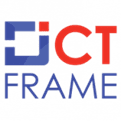22nd August 2025, Kathmandu
The Nepal Association of Financial Journalists (NAFIJ) AUTO Policy Dialogue held during the NADA Auto Show 2025 emphasized the urgent need for a stable credit policy to support the sustainable growth of Nepal’s automobile sector.
NAFIZ AUTO Policy Dialogue 2025
The program, themed “Stability in Credit Policy: Foundation for the Long-term Development of the Automobile Market”, was jointly organized by the Nepal Forum of Economic Journalists (NAFIZ) and the Nepal Automobile Dealers Association (NADA).
NAFIZ AUTO Policy Dialogue: Why Stable Credit Policy Matters
Experts at the NAFIZ AUTO Policy Dialogue said the automobile sector is one of the safest areas for loan investment. They stressed that without consistent lending policies, both consumers and businesses face uncertainty.
Stakeholders called for predictable loan rules, hire-purchase support, and long-term credit options to make vehicles more accessible and to strengthen the auto industry.
Nepal Rastra Bank’s Position on Auto Loans
At the dialogue, Guru Prasad Paudel, Executive Director of Nepal Rastra Bank, presented the central bank’s perspective:
- Over NPR 200 billion has already been invested in the auto sector.
- Hire-purchase companies, licensed since 2013 (2070 BS), have collectively invested NPR 26 billion.
- The sector is not “unproductive.” Licensing specialized companies proves its importance.
- Buyers generally pay 40% upfront and finance the remaining 60% through loans, a global standard.
- Loan-to-Purchase (LTP) ratios abroad range from 60–80%, and similar practices are evolving in Nepal.
- Private vehicles face lower interest rates, while commercial transport loans are considered higher risk.
- Paudel emphasized that the central bank supports structured auto financing policies and is committed to regulating hire-purchase companies effectively.
- Agricultural Development Bank Expands Auto Loan Portfolio
Govinda Gurung, CEO of Agricultural Development Bank, shared his insights at the NAFIZ AUTO Policy Dialogue:
- While agriculture remains the priority, the bank is diversifying into automobile financing.
- Auto loans show lower default risks compared to other industries.
- Banks evaluate customer behavior and asset ownership before approving loans.
- Financing commercial vehicles is riskier than private ownership.
- Loan-to-Value (LTV) ratios differ by vehicle type and country.
- Hire-Purchase Companies Driving Growth
Baburam Sharma, CEO of Venture Hire Purchase, highlighted the contribution of hire-purchase firms:
- More than NPR 26.5 billion has been invested in vehicle financing.
- Loans extend beyond Kathmandu, reaching rural consumers.
- Vehicles linked with established brands and service centers are safer for financing.
- The demand for electric vehicle (EV) loans is rapidly increasing.
- Default rates in the hire-purchase sector remain very low.
- Sharma requested policy facilitation for hire-purchase companies to expand their role in financing Nepal’s vehicle market.
Bright Future of Nepal’s Auto Market
Krishna Dulal, Former President of NADA, said at the NAFIZ AUTO Policy Dialogue that the automobile sector is a safe and profitable industry. He urged the government to consider new policies, such as:
- Allowing employees to take 20-year long-term vehicle loans.
- Expanding access to both motorcycles and cars through installment schemes.
- Encouraging wider ownership which would boost the overall auto market.
Conclusion
The NAFIZ AUTO Policy Dialogue concluded that the automobile industry has a bright future in Nepal, but its growth depends on consistent and stable credit policies.
With over NPR 200 billion already invested, the sector is thriving, yet stakeholders agree that policy clarity, supportive loan structures, and hire-purchase facilitation are critical to ensuring long-term success.
For more: NAFIZ AUTO Policy Dialogue 2025
